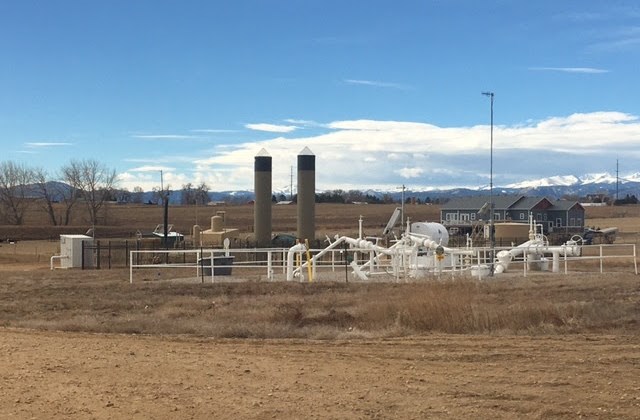A new report argues that the modest economic benefits of Colorado’s oil and gas industry comes at a high cost to air, water, environment and home values.
The report by the Colorado Fiscal Institute, a nonprofit organization based in Denver, is one of the first to try to quantify both the economic benefits and costs of oil and gas. The report found that the oil and gas extraction industry makes up 1.8% of total wages in the state, 3.4% of income, 3.3% of gross domestic product and less than 1% of total employment.
Nine Colorado counties get more than 10% of their property tax from oil and gas property, including Weld County with 43.6%. Boulder County collects less than 1% oil and gas property taxes.
The oil and gas industry’s largest impact on tax revenue is on education funding, according to the report, but that money flows to a small number of the state’s school districts.
About 70% of Colorado’s school districts receive less than 1% of their total revenue from property taxes paid by the industry, and only a handful receive more than 10% of their total revenue from those taxes, the report found. Fifteen school districts get more than half their property tax from oil and gas.
Platte Valley RE-7 in Weld County relies the most on oil and gas property, with 86% of their value coming from oil and gas or $17.1 million. About 18.1% of taxable property in the St. Vrain Valley School District is oil and gas, according to the district’s fiscal report for 2021.
However, the report tracks a number of costs including ozone-related deaths, water usage, lower property values, habitat fragmentation and more that it argues are a result of the oil and gas industry.
The report estimated that pollution emitted by oil and gas operations in Colorado will cause over $13 billion in damages between 2020 and 2030, based on calculations of the social cost of oil and gas pollution set in state law.
By 2025, the number of ozone-related premature deaths attributed to oil and gas emissions is estimated to be 70 per year, according to the report. As for property values, the report said that in Weld County, drilling within a half mile of a property brings its value down by 1% — on the Western Slope that can be as much as 35%.
Hydraulic fracturing, which is used in the vast majority of oil and gas wells, uses about 1.6 million gallons of water per well or about 80,000 gallons per year. One study mentioned in the report found that the volume of water required annually for a new oil and gas development is enough to serve up to 296,100 people.
The pollution from oil and gas in Colorado contributes to climate change, with climate-caused disasters alone costing the state $20-$50 billion since 1980.
“This analysis shows Colorado’s oil and gas industry is in fact merely a fraction of Colorado’s diverse economy,” said Colorado Fiscal Institute Senior Economist Chris Stiffer, one of the report authors.
The study concludes that the social cost of carbon for all the emissions created during drilling, production and transmission of oil and gas in Colorado is 1.5 times greater than the revenue the state collects from the industry.
“If the oil and gas industry in Colorado gradually declines due to market forces, regulation or a combination of these, we can expect the economy to evolve and develop to accommodate these changes,” the report said. “Historically, the economy has shown that over time it has absorbed large changes without adverse affects. Some counties would be disproportionately affected by this change, and Colorado will need to come together to find a solution that will support these communities.”



